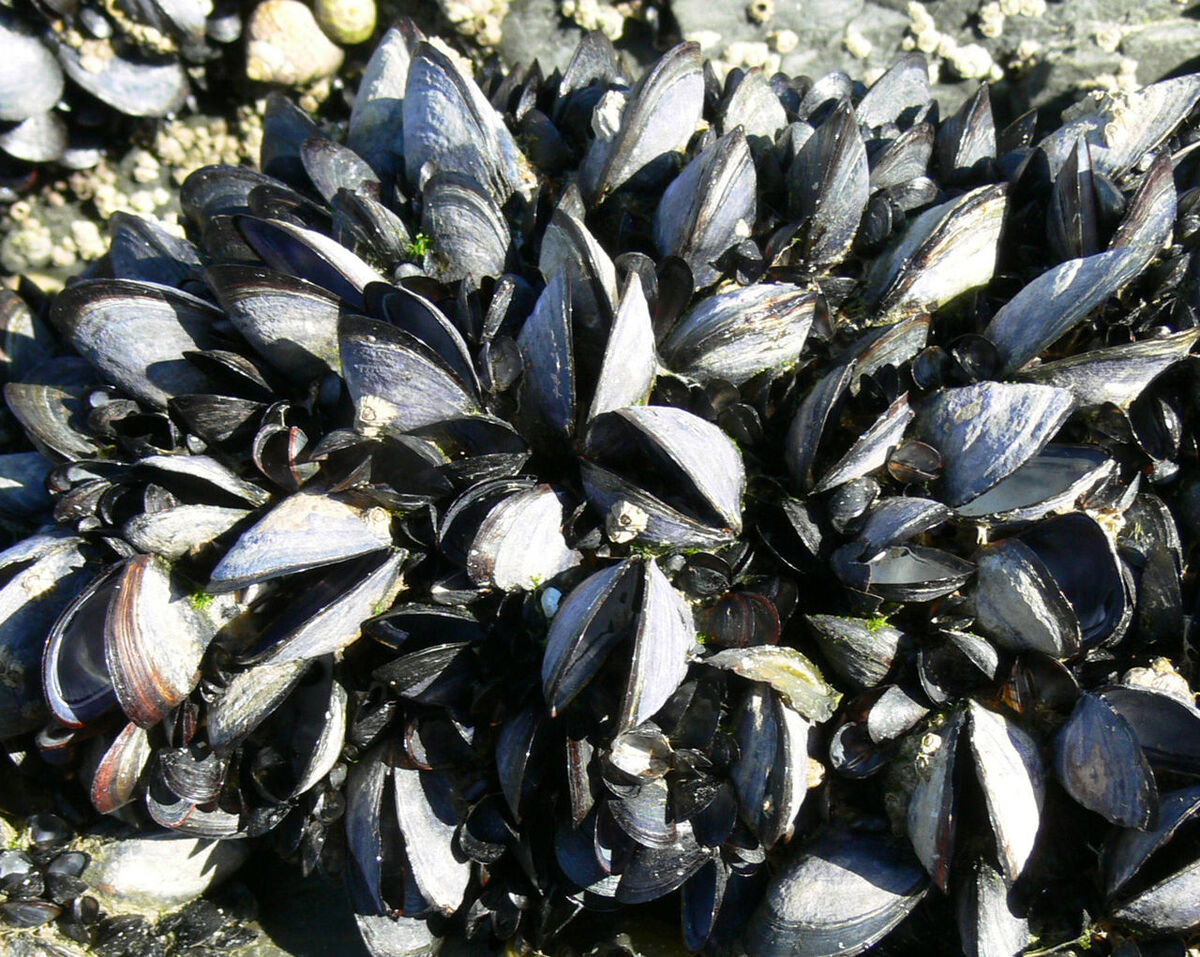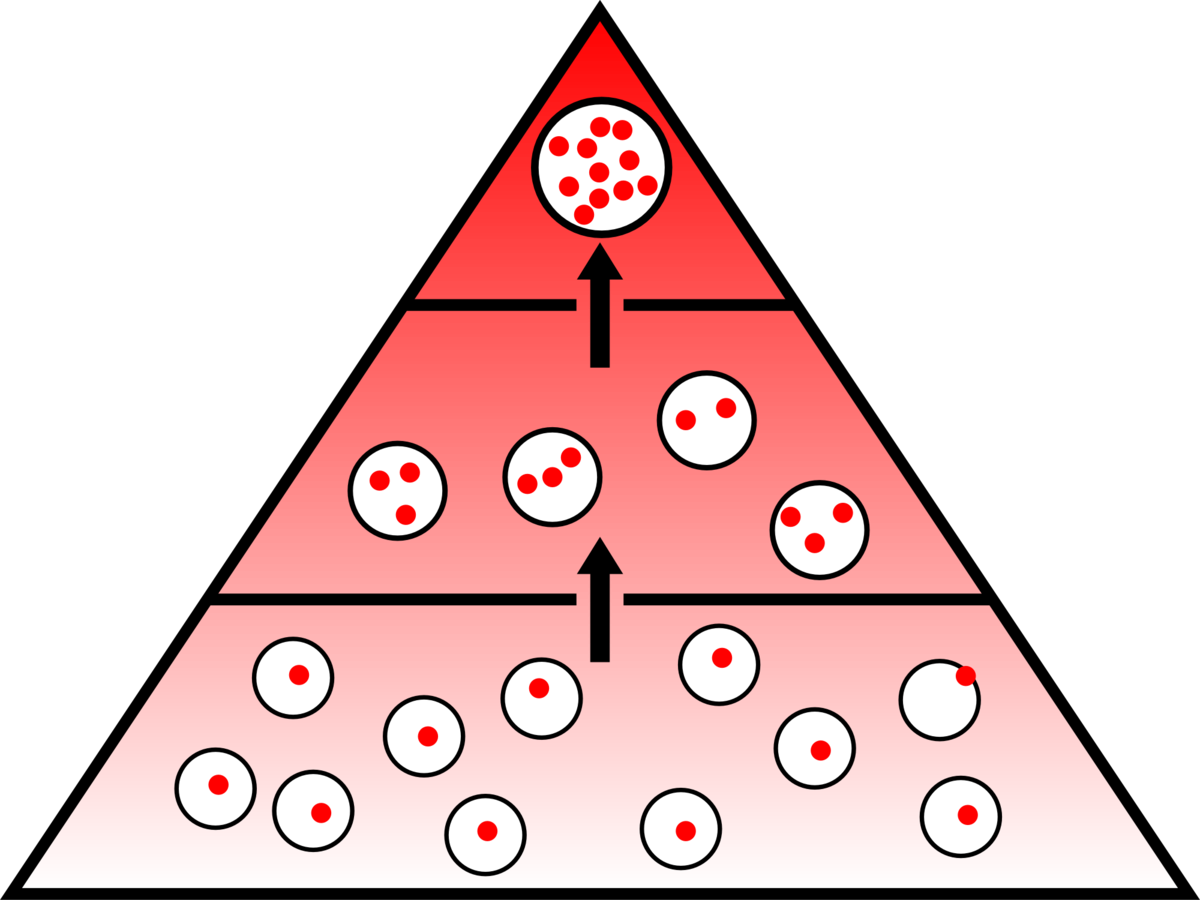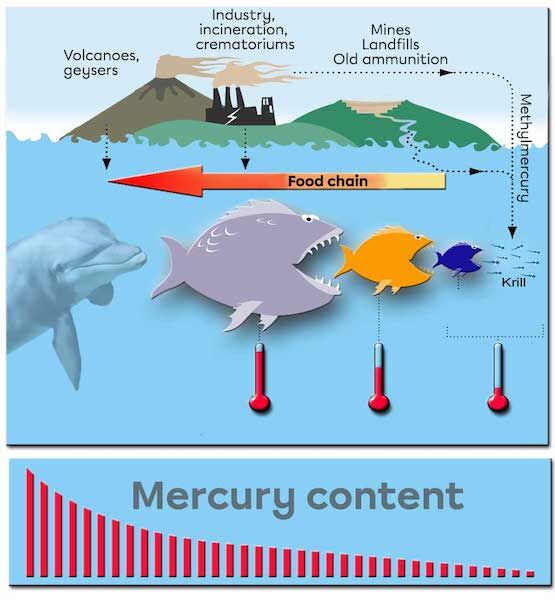Bioaccumulation is defined as the accumulation of a contaminant in the tissues of a living organism as a result of the absorption of that contaminant from its living environment, or following the consumption of contaminated prey. Bioaccumulation occurs when an organism absorbs a contaminant faster than it eliminates it.
Contaminants released into the environment by humans, such as pesticides or heavy metals, can accumulate in ecosystems and negatively affect the health of organisms living in this place. These potentially toxic substances are absorbed by organisms and accumulate in muscle tissue. Thus, the simple fact of living in a polluted environment, such as in a stream with a high content of heavy metals, can be fatal for many individuals.
There are two types of bioaccumulation.
Bioconcentration is the absorption of a contaminant and its accumulation in the tissues of living organisms as a result of direct contact with the environment.
Bioconcentration is a form of direct bioaccumulation: there is no intermediary between the contaminant and the living being, since the latter directly absorbs the contaminant that is present in its environment.
Aquatic filter-feeder organisms, such as mussels and oysters, filter water to feed themselves. Thus, they absorb a very large amount of contaminants, which accumulate in their body. Eventually, the concentration of contaminants in their system exceeds that of the aquatic environment in which they live.
Biomagnification is the absorption of a contaminant and its accumulation in the tissues of living organisms as a result of the ingestion of species from the previous trophic level.
Biomagnification is a form of indirect bioaccumulation: the absorption of contaminants occurs through the presence of intermediaries. When contaminated organisms from lower trophic levels are consumed, they pass the contaminants to their predator. This results in an increase in the concentration of contaminants as we move up in trophic levels.
Thus, in a contaminated environment, all trophic levels are affected. The producers (first level), drawing the nutrients necessary for the transformation of inorganic matter into organic matter, accumulate the contaminants present in their environment.
Primary consumers (second level), in addition to absorbing contaminants by living in a polluted environment, also accumulate pollutants that the producers themselves have absorbed.
The same applies for secondary and tertiary consumers (upper levels), all accumulating contaminants previously absorbed by their prey. This phenomenon often means that individuals at the top of the food chain, such as large fish, raptors and carnivorous mammals (beluga, humans, etc.), have a concentration of contaminants that exceeds the toxicity threshold.
In the image below, the biocontaminant, mercury, is produced by coal-fired power plants, volcanoes, and mines. This contaminant travels from the atmosphere to the water where it turns into methylmercury, a toxic compound that easily enters a food chain. It is first absorbed by krill and salmon (primary consumers), which accumulate some of it in their body tissue (represented by the thermometer on the right).
The latter are eaten by a predator, either tuna or trout (yellow fish), which accumulates a higher concentration than salmon (as shown by the thermometer under the yellow fish).
These two species of fish are preyed upon by larger fish, such as halibut (represented by the gray fish in the image). The concentration of methylmercury increases even further at this trophic level, as shown by the red thermometer.
Finally, large predators like dolphins, sperm whales, orcas, sharks, or swordfish (left of image) contain the highest levels of mercury, as they accumulate biocontaminants from all previous trophic levels.
Some fish should be eaten in moderation. Since humans generally represent the highest trophic level in a food chain, it is often humans who experience high levels of contaminants in their bodies. Health Canada issues guidelines on the amount of certain types of fish that can be consumed.


